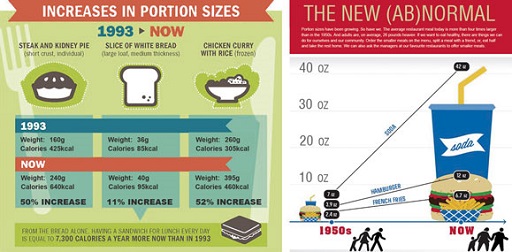9 Improving understanding about what we eat
As mentioned previously, obesity is the result of eating more calories than the body needs. This can be because of unhealthy food choices, such as eating food and consuming drinks high in energy, fat and/or sugar, as well as drinking too much alcohol. But in order to do better in terms of weight management, most people need some assistance to bring about positive behavioural changes. In part this requires further education, so government, industry and individuals need to work together to tackle the issue of obesity. Nonetheless most people can find it difficult to estimate how much they have eaten and to be ‘healthy’. Education is therefore central in ensuring people eat well and adopt healthier lifestyles. But what strategies need to be deployed to ensure that changes are made, including ensuring that people are sufficiently educated, and that they can accurately determine their calorie intake? You will briefly be introduced to factors related to the food industry, diet, nutrition and education, and some of the policies focused on the next section of this free course.
Some people might think that industry has little to do with obesity, but advertising agencies employ sophisticated methods to increase our consumption from childhood onwards. As highlighted in the short animation in the activity below.
Activity 8 Five things junk food marketer know about your child
Watch the short animation and answer the question below.

Transcript: Video 4 Five things junk food marketers know about your child
1. In addition to the ‘Five things junk food marketers know about your child’, what three techniques or strategies used by marketers are highlighted at the start of the animation?
Comment
The three techniques or strategies are hashtags, games and sponsored tweets. For more about how children in particular are targeted by the food industry you might like to explore the free course ‘Children and young people: food and food marketing’ after finishing this course: Children and young people: food and food marketing [Tip: hold Ctrl and click a link to open it in a new tab. (Hide tip)] .
In addition to sophisticated food marketing, increasing portion sizes are also important to note. As the infographic below illustrates, the food industry has been increasing portion sizes substantially over many years. As our exposure to larger portions has become more and more common, these sizes have come to be seen as appropriate, with consumption then increasing (Marteau et al., 2015).


